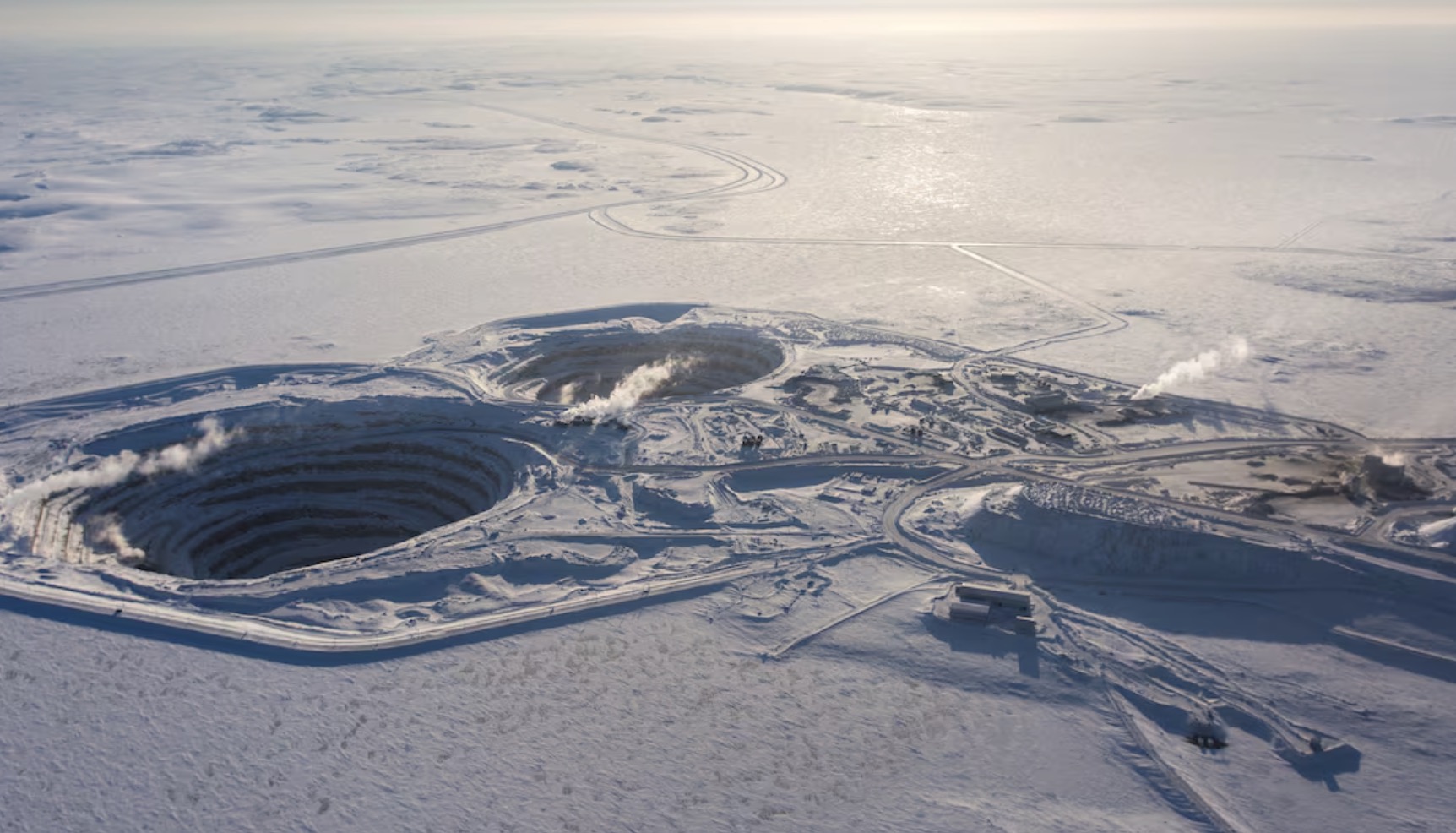Canada's mild winter disrupts ice road to remote Arctic diamond mines
An unusually warm winter in Canada this year has delayed the opening of a 400-kilometer ice road that is rebuilt every year as the main conduit for Rio Tinto, Burgundy Mines, and De Beers to access their diamond mines in the remote Arctic region.
The Winter Road, which serves the region accessible only by air for 10 months of the year, opened with a two-week delay in the middle of February, disrupting the movement of goods along the ice road built over 64 frozen lakes.
Earlier this week, the Tlicho government in Northwest Territories (NWT) restricted the movement of commercial trucks for a few days on one of the winter roads due to anticipated warmer weather across the North Slave Region.
While diamond production remains unaffected, the delay underscores the challenges that companies face as the mines that make Canada the world's third-largest diamond producer come to the end of their productive life.
It also highlights the infrastructure hurdle for the NWT and Nunavut that are positioning themselves as the next frontiers in the exploration of critical metals, such as rare earth, cobalt and lithium, in the transition to a greener future.
The delays in building the Winter Road, which first became operational in 1982, have happened in the past, but this year's is the longest delay in recent years, according to Tom Hoefer, a senior advisor to the NWT and Nunavut Chamber of Mines.
"We did start the road a bit later as a result," he said.
Climate change, driven by the burning of fossil fuels, coupled with the emergence of the natural El Nino climate pattern, pushed the world into record heat territory in 2023.
The impact of El Nino this year resulted in Yellowknife, the capital of the NWT, recording a maximum temperature of zero degrees Celsius in December and minus 8.7 degrees Celsius in February, making it the warmest winter days in a decade, according to data from Environment Canada.
The Winter Road opens between late January and early April and requires minimum of 74 centimeters of ice for vehicles that can carry 26,000 kilograms of gross vehicle weight, to transport diesel and dynamite required to operate the mines.
On warmer days, the engineers have found ways to trick nature by creating artificial ice using giant sprinklers to spray water high up in the air so that it cools and forms a thick layer of ice when it falls.
Paul Gruner, CEO of the Indigenous corporation Tlicho Investment Corp & Group of Companies, said this year the warm winter at the start and if there is a warmer end of the season or an early spring, it could risk an early closure.
"So when you're nibbling away on both sides of that, you start to create a very short season," Gruner said.



No comments:
Post a Comment